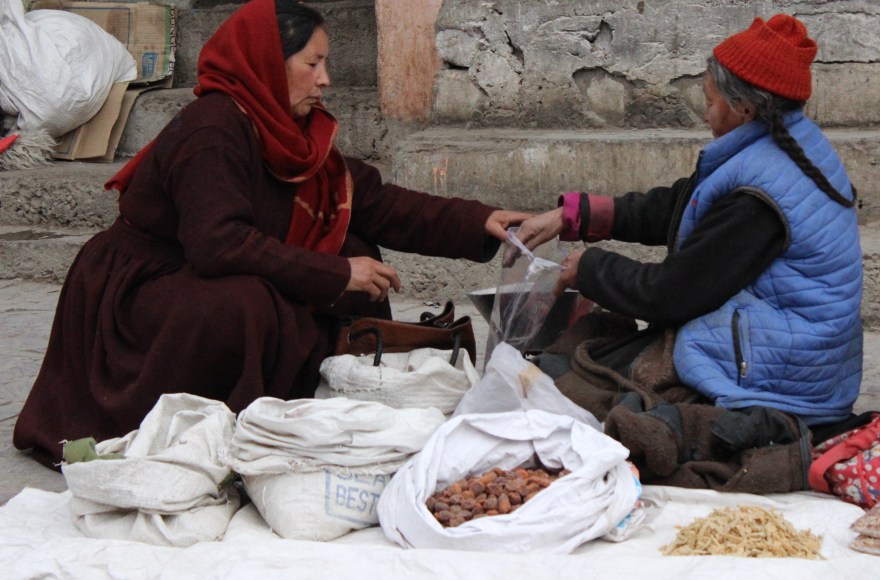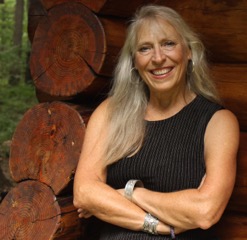The Ladies of Ladakh

The old women in their long maroon-colored, woolen coats called gonchas, line the sides of the pedestrian plaza in Leh, Ladakh. They spread their full coats out which are gathered at the waist, and surround themselves with potatoes, onions, turnips, rhutabagas, and onions- the fall crops of the high Indian Himalayas. They will sit there all day, starting when the winter sun’s warming rays reach the street and quickly closing up “shop” about 5, when the sun sets and the cold drops down like a sledge hammer.

Cold is something the people of Ladakh are used to for this “land of high passes” in northern India is truly a high dry, cold desert. The city of Leh is nestled on a high plain between two mountain ranges of the Hindu-Kush Himalayan Mountains at 11,562 feet. It is roughly the size of Scotland. Ladakh, the state Leh sits in, is the northern Indian state with a population of less than 300,000. It was the crossroads of the ancient trade routes from South Asia and until the end of the 19th century, mule trains carrying shawls and spices made the journey through Ladakh to China. This haven of Tibetan culture –Ladakh’s people are a mix of Tibetan and Indo Aryan–became part of independent India in 1948. Ladakh does not feel like India but more like Tibet.

The Ladakhi women sit with their scale to make calculations, then dump their customers’ purchases right into their cloth bags that they carry. In-between sales, they knit- socks and booties to be sold in the bazaars and markets. I look at them, with their hair braided in two long tails, joined together down their backs and wonder at their age. They look at me, a white woman, walking by in a puffy down jacket and probably wonder about my age too. We might not be too far off although our worlds are far apart.

The old men do not sell things or knit. The very few I see walk around with silver prayer wheels which they spin continuously and finger prayer beads like a rosary. They are saving up prayers for the next life, feeling like the next stage is closing in and they want their brownie points to start accumulating.
Where are the men? They aren’t sitting in the plaza selling things to feed their families and themselves. I’ve seen a lot of old monks. Do they become monks when they get old and want to start to store up good graces? The women, however, are out there still, doing what needs to be done, as is the case for many developing countries. You see the women carrying loads of sticks and tremendous bundles of greens to feed their livestock.

Upon doing research I learned from the website www.counterculture.org that a large number of Ladakhi men are serving in the army, engaged in tourism, absorbed with monastery affairs as monks. Women are the most active and dynamic but over-burdened and neglected as an agent of social change. The daily work of making ends meet, the preoccupation with the health and safety of the family, worrying about those unglamorous details of daily life, are matters that many men simply are not concerned about. Women in Ladakh are more skillful and hard-working than men in many respects.
I’m not ready to start focusing on the spiritual life, the next life., where you retreat into yourself and read metaphysical books, meditate a lot. Too much work to be done. The Ladakhi women knit and sell root veggies. I write stories. We work still. Maybe the men will pray for us.
Posted in: Travel Story

Lovely story as usual – thanks!
So well written and thought provoking. Bp
thanks Bart- miss you
Followingmy return from Kashmir lasy May, I’ve been seriously thinking about visiting Ladakh. I’m even more inspired now after reading you rpost. I’d like to see the ladies you wrote about. And those views!
Go for it- hear their are 400 guest houses in Ley now!
let the men work! the women won’t let them ! they would have nothing to do themselves.